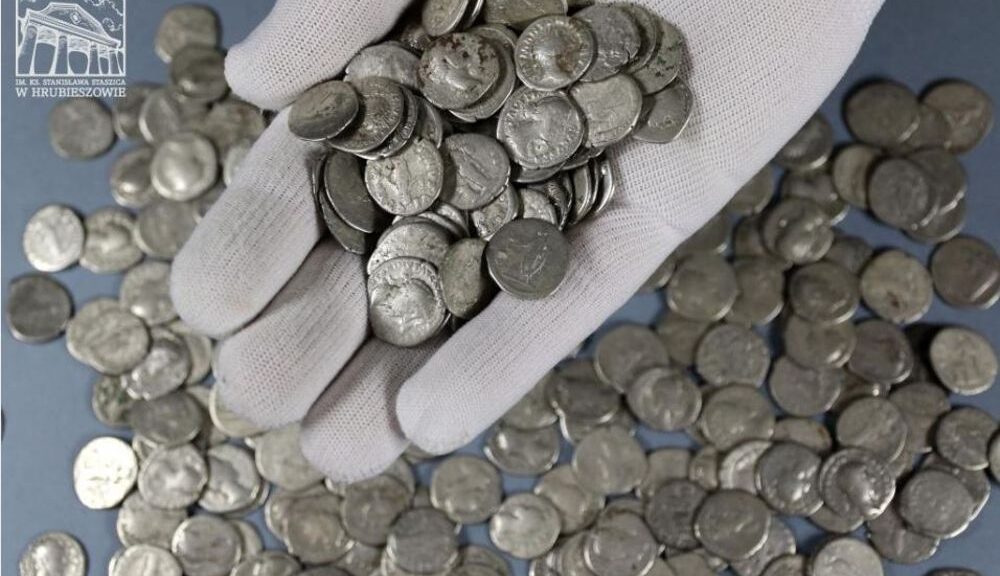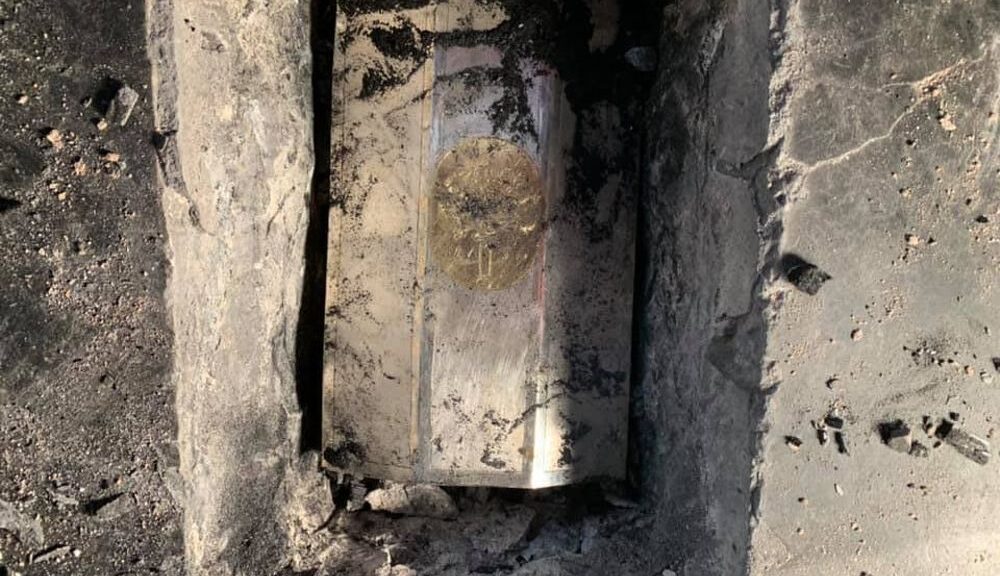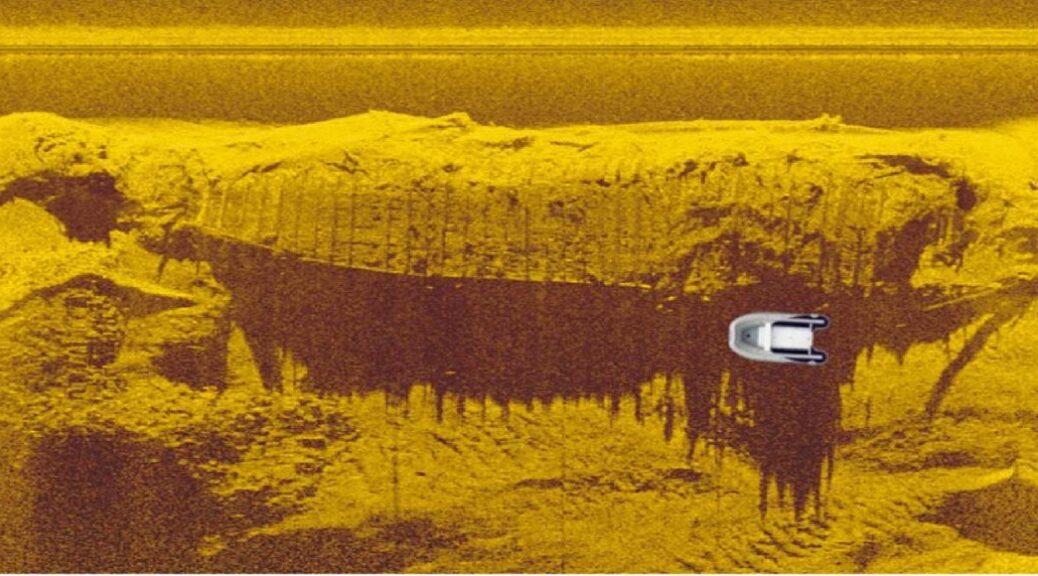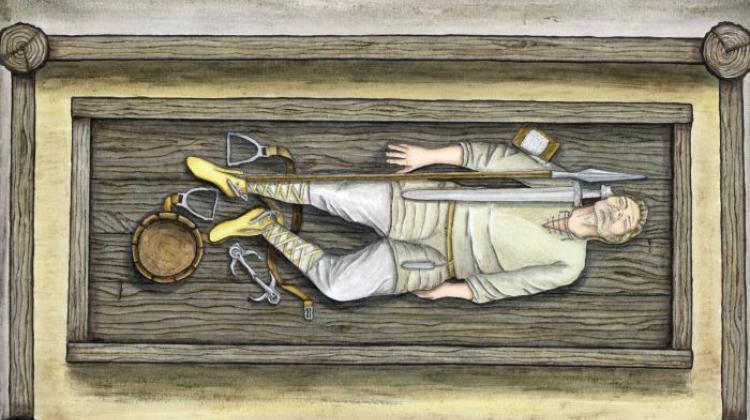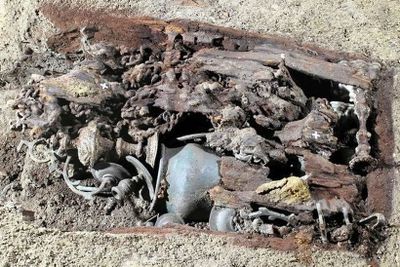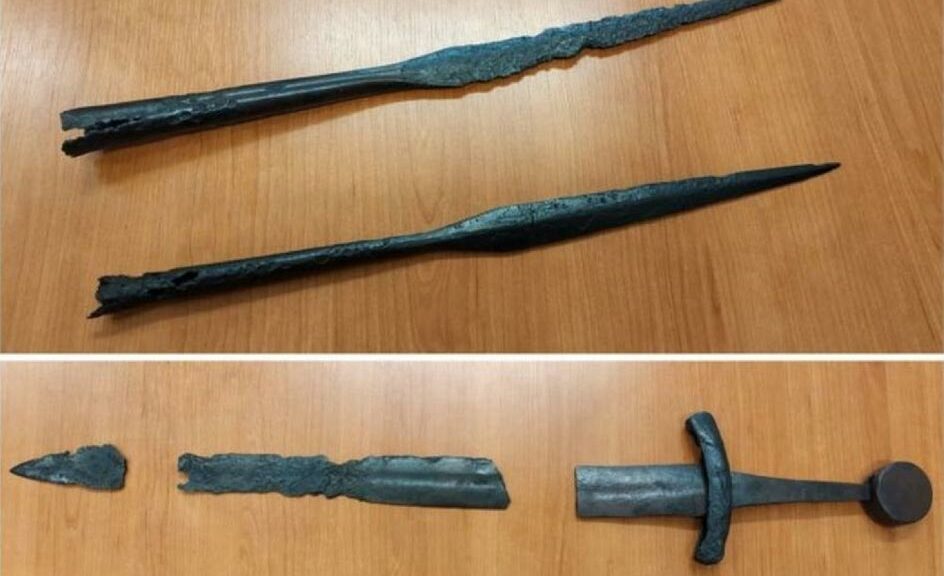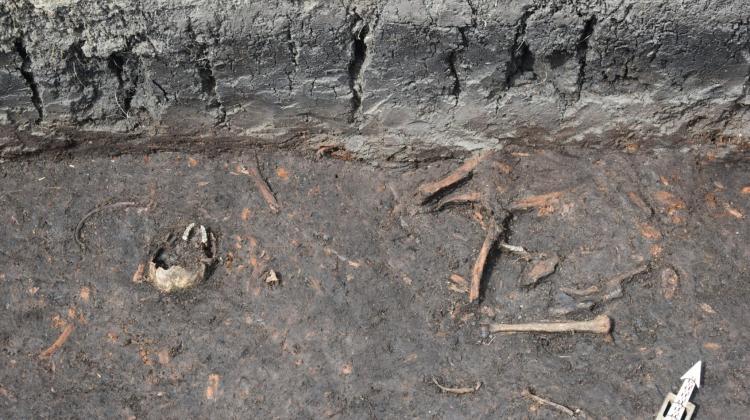Farmer looking for abandoned antlers stumbles upon largest Ever haul of Roman coins
It makes rather more sense as it was loot from the various ‘barbarian’ nations crashing around Northern Europe during the period of the decline and eventual fall of the Western Roman Empire.
‘One of the largest ever hauls of treasure from the Roman period to be found in Poland and the largest ever in the Lublin region has been uncovered in Hrubieszów near Lublin.
‘Excited archaeologists think that the treasure of 1,753 silver coins weighing over five kilos was abandoned in the last stand of the Vandals before fleeing from the arriving Goths at the end of the second century AD when Europe was in upheaval as the Western Roman Empire was collapsing.
The coins were not in one place but were spread by agricultural machines over 100 m. In total, 1,753 coins were discovered.
Andrzej Kokowski from the Archaeology Institute in Lublin, who discovered the presence of the Goths in the region, is in no doubt as to the scale of the find. “This is an amazing phenomenon of an ancient culture that can be seen in one place. This treasure will be the crown of Polish archaeology,” he said.

The dinars are in the possession of the local museum in Hrubieszów, which released news of the find yesterday. However, the treasure was found in 2019 in a field near Cichobórz, south of Hrubieszów. They were spotted by local farmer Mariusz Dyl, who was looking for abandoned antlers.
Dyl immediately informed the staff at the museum in Hrubieszów about his discovery. Together they returned to the site and with a team of archaeologists and volunteers, they discovered another 137 coins.

The Local museum director Bartłomiej Bartecki said assessing the value of the find that the average pay for a Roman legionnaire at the time was about 300 dinars.
“You couldn’t buy a village for this, but it was not a small amount, especially for barbarian tribes,” he said

The archaeologists believe that the coins were originally placed in a wooden casket or leather pannier. Although the remains of the container have not survived, it is known that it was decorated with silver-plated rivets made of bronze as eight of them were found among the coins. The coins were dated to the second century as they bear the image of Roman emperors Nerva, who ruled 8 November 30 to 27 January 98, and Septimus Severus, 11 April 145 to 4 February 211.
The area was inhabited by Vandals at the time, who were pushed out by Goths in the great wandering of peoples from Scandinavia to southern Europe at the end of the second century. Other finds in the region suggest that the departure of the Vandals was a time of great violence.
“It didn’t happen without fighting. From this period we know of numerous Vandal cemeteries where warriors were buried with ritually destroyed weapons were buried,” said Bartecki.
In his opinion, the burying of treasure is also a sign of great upheaval.

“Perhaps the Vandals hoped to return in the near future, so they decided to bury the coins. But they were mistaken in their assessment,” he said.
Andrzej Kokowski from the Archaeology Institute at the Maria Curie-Skłodowska University in Lublin believes that the buried treasure represents the last stand of the Vandals in the Lublin region.
“The situation was so bad for the Vandals retreating, or rather the fleeing from the Goths that they hid everything that was most precious,” he said.
“It seems that this is where the Vandals lost the means to continue fighting!” he added.
The archaeologist underlined how important the find is for understanding the downfall of the Vandals in the region.
“They had to get rid of huge financial resources that were necessary to wage war with the Goths, and therefore they ended up helpless. The hidden coins remained under Hrubieszów.
“They couldn’t come back for them and could not recruit soldiers. That is why the Goths peacefully spread to the whole south-east and occupied Ukraine,” he said.
The Vandals were a Roman-era Germanic people who first appear in written records inhabiting present-day southern Poland.
The Goths, meanwhile, were also German people probably from southern Scandinavia who played a major role in the downfall of the Western Roman Empire. The coins will now be analyzed by experts from the University of Warsaw, which will take about a year due to the size of the haul. In the meantime, the museum wants to show the treasure to the public, but it says that due to the current epidemic the exhibition will be available only online.
